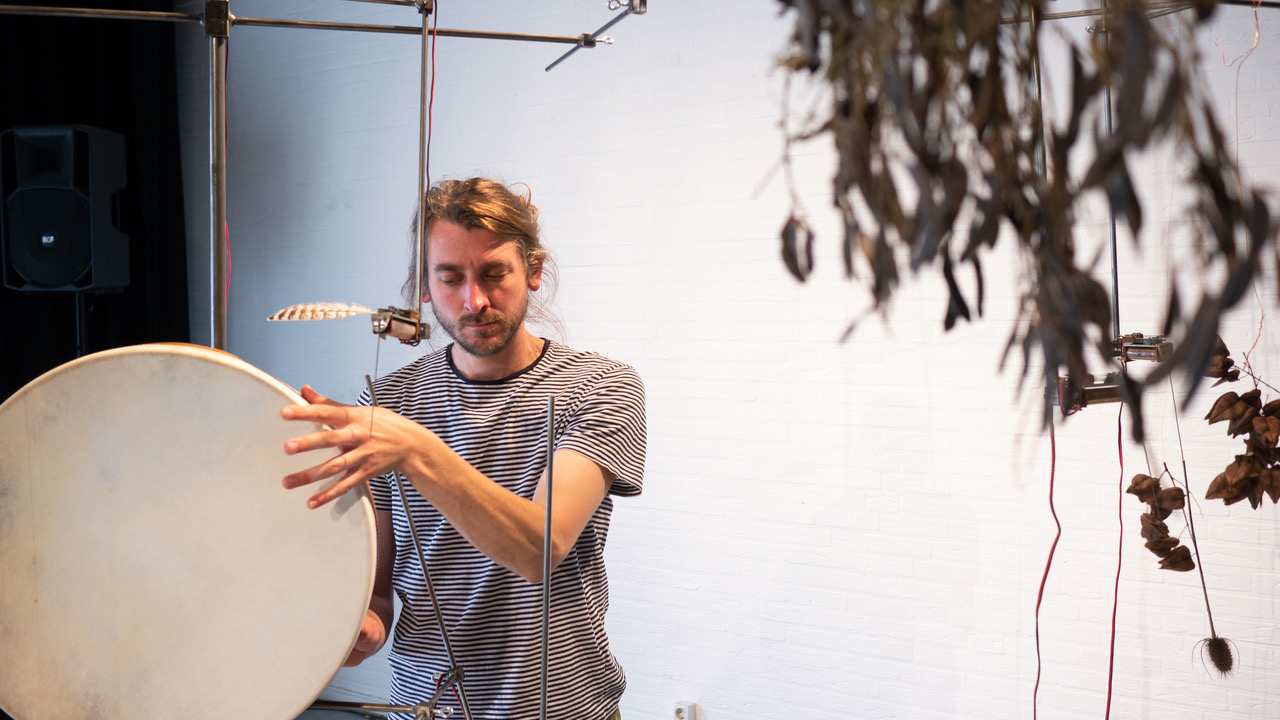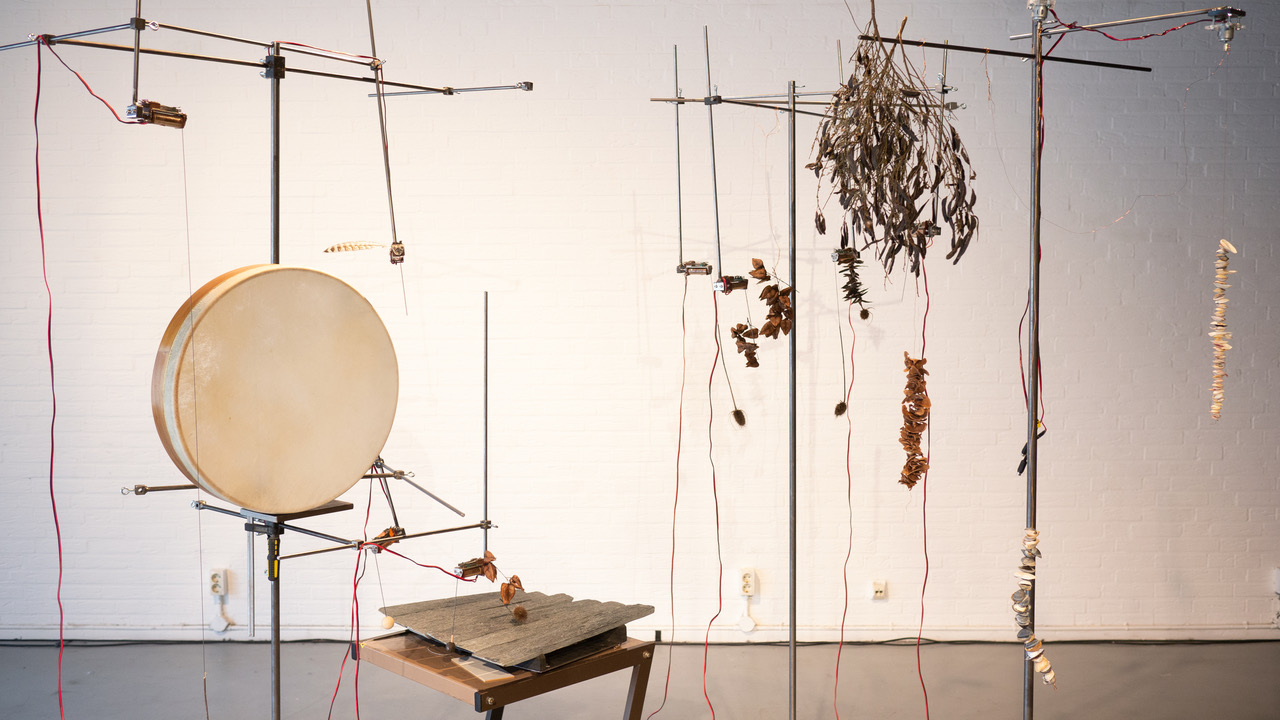Meet iii resident Hans Beckers

Sound and music have always played an important role in human society. Even as contemporary technology has largely replaced stone percussion instruments, music is still as essential to life as it was in prehistoric times. Sound artist and performer Hans Beckers blurs the border between music and the visual arts. Currently, he has taken up residency at iii to work on his latest project titled La Floresta, which will be presented at the Rewire Festival this September. He has a Bachelor and Master Degree in Visual and Performance Art from the Royal Academy of Fine Arts Ghent.

Where did your fascination with music start?
I have always been into music ever since I was a child and music has always had a strong presence in my life. Early on in my life, my father taught me how to play the guitar and I started percussion from a very young age as well. My father was a man from the sixties, so he had a big passion for music in general. He had a large record collection with music from South America and from all over the world. At one point in my life, I was doubting whether to study at the conservatory or to study the visual arts, because both were interesting to me. In the end, I graduated from the Royal Academy of Fine Arts with a performance piece/sound installation that combined both these interests.’
Your current project La Floresta will be a type of sound installation as well, right?
‘Yes, for this project I am making an installation that is all about natural materials such as seed pods, stones, shells, and sand. These materials all refer to or have traditionally been used as instruments in prehistoric times. So with this project, I am going back to the source as it were, both in terms of material and in music. I want to explore how music could have been like in hunter-gatherer societies as well as explore what kind of functions it could have had in their rituals.’
Is this something that you explore more often in your work?
‘Yes, my previous installation Sonicum Voda has been about water. The main inspiration for that piece were the Bambuti pygmies of the Ituri Forest located in Central Africa, who have a unique way of using rivers to make music with. This is something you will find in multiple hunter-gatherer societies all over the world and it made me wonder about how I could use water as an instrument. The way that the Bambuti Pygmies make music with water, is by using the river as a percussion instrument. When you cup your hand, it creates a kind of bowl shape and when you hit the water with a cupped hand, it creates a very typical sound. Starting from there I started to look for materials and devices I could use in combination with water to try and make music with. One of the things I ended up using was a hot plate. When water hits a hot surface it creates a very distinct sound, which sounds very similar to hitting a snare drum. The great thing about using a hot plate is that you can control the heat, which controls the vaporization of the water and consequently allows you to control the sound it makes.’

For La Floresta you use very primitive materials to make music with, where do you get these materials from?
‘Most materials come from my garden. I have a big garden and grow a lot of plants, so the seed pods come from there as well. Right now, during this residency, I collected seashells at the North Sea and others come from other places I have visited in the past, such as Australia. It’s a collection that has taken years to build up and which is forever growing. I also reuse materials from previous installations. It is something that constantly develops, just like my own artistic practice.’
Even though a lot of your work refers back to indigenous cultures and the way they create music by using very primal and basic materials, you use a lot of contemporary technology in your installations. Which may seem very counterintuitive to some?
‘We live in the 21st century, so of course, I use the technology that is available to me. The installations I create are a way to create an orchestra that allows me to start a dialogue with the materials that I use. To me, technology is serving the materials. For example, for La Floresta, I have built a lithophone, and just in the way that the sound depends on the way I play the stones with my hands, I can manipulate and dictate how the mechanism and hammers strike things, their dynamics, timbre, rhythm, etc. So in the end, the essence and what I actually play, are always the raw materials.’

All your installations have a very strong sculptural presence to them, what role does that play in your work?
‘My work can be an instrument or it can be a sculptural piece that can be exhibited by itself. I also compose music and program the installations through special software so the installation can play it on its own. For me, art is about the mystical experience and my goal is to immerse people in a world of sound and material. I want to offer the audience a very deep experience and a lot of things that can help me to achieve this. The way a work is presented, what kind of shape it has, or what kind of lighting you use, all these sculptural aspects of the work, help to create an experience and can allow the audience to be sucked into the piece more easily. However, to me, it is mostly the element of listening that allows a person to get into a deeper experience. During meditation, I experience this very strongly and it is that experience I want to share with people. At my home, I have a very large tree in my garden and throughout the day it has a different sound. It has a whole spectrum of tone colour and this is also what I try and bring across with people; the deep experience that listening can be. I am always looking for ways to how I could create something more than a concert.
A lot of music that you find in indigenous tribes around the world usually revolve around community, is this also important to you?
‘Yes, one of the original purposes of music was to come together as a community and make sounds. It wasn’t always such an exclusive thing as today, where the maker of music and the audience are very separated from one another. This trend only started about 500 years ago in the Western world when people started to specialise in specific instruments.
One of the things that I want to research in my upcoming projects is how to involve the audience in my performances. For example, I want to include rituals where people will be provided with stones so they can participate in the performance. By listening and active participation in making sound, awareness is stimulated. It is all an extent of my previous research and experiments on the potency of interactivity. I will also collaborate with other musicians and over time I want to create a community of like-minded musicians. Next year I will collaborate with nathan daems, berlindedeman, bert cools en indre jurgelevičiūtė. Sharing music is something that is very important to me. ’
Will you include any rituals when you present La Floresta at the Rewire Festival?
‘No, I only have half an hour for my performance and that doesn’t allow for the inclusion of rituals. I have tested different rituals in previous performances and it will be something I will research more deeply later, but not this time. Now it will be a solo performance and I think it is important to find peace in that and dive deep into the music myself. Currently, at the iii residency, I am building the installation during the day and at night I work on the music. In the last days leading up to the performance, I will really dive into the sounds and start composing music with it. But the way I see La Floresta is that it is part of a larger, ongoing research. Before my projects were more subdivided and now things are slowly converging. This solo performance will be an interesting introduction.’